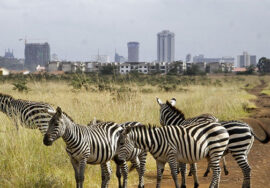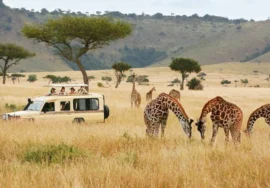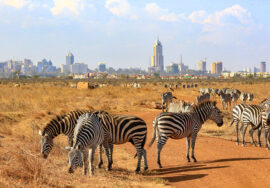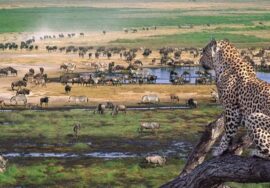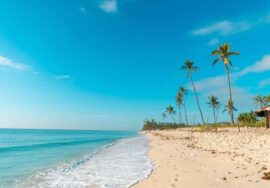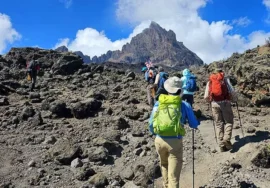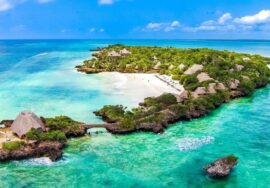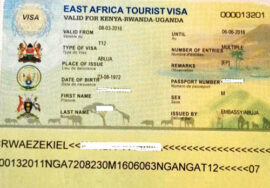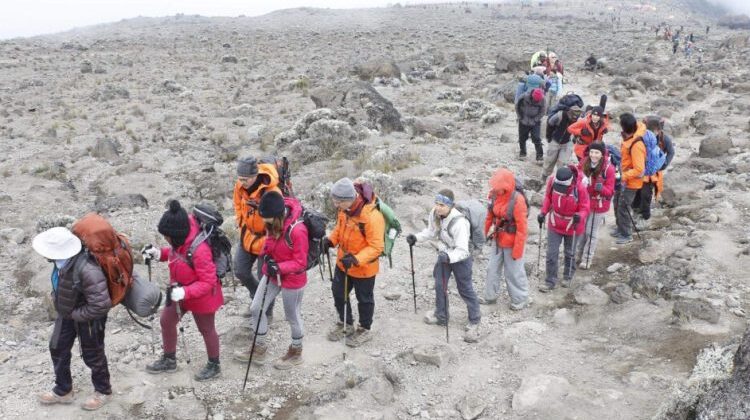
KILIMANJARO TREK CLIMBING THE MACHAME ROUTE
KILIMANJARO TREK CLIMBING THE MACHAME ROUTE, This steeper route for a Kilimanjaro trek is very common. This could be because the scenery is so beautiful, with a wide range of plants and animals. More than half of “Kili’s” climbers like this way to get to the top.
Climbers have a good chance of reaching the top of Machame because it is a great way to get used to the altitude and there are different trails that can be used for the descent. Even though it’s called the Whiskey path because it’s so difficult, don’t let that scare you away. This path takes you through beautiful forests and has an incredibly high success rate.
As you come out of the dense forests, you’ll have to walk through alpine moors to get to the Shira Plateau. From there, you’ll go into the moonlike Southern Ice Fields and make your last push to the top of Uhuru Peak.
Climbers can add another day to an already well-modulated route to improve their chances of success even more.
You will stay in tents along the way, which our porters will move and set up for you. You’ll need the right gear and a good sleeping bag. Here is a full list of what you’ll need.
Of course, the Machame is a beautiful and well-known trail, but it can be hard. But if you are fit, the route’s great preparation features make it possible for a great and successful climb.
KILIMANJARO TREK CLIMBING THE MACHAME ROUTE
Day 1: Kilimanjaro Airport – Moshi
Arrive at Kilimanjaro Airport. An Safari Trips to Kenya driver will meet you there and take you to the Springlands hotel (or a similar hotel) in Moshi. On the first night of your Kilimanjaro trip, dinner will be served and you will get some rest.
Day 2: Machame Gate to Machame Camp
Today is climb day! We’ll be up early for a meeting to talk about our climb, including what you can expect, how to stay safe, and how the climb is planned in general. After breakfast, it will be a 45-minute drive from Moshi (910 m/3,018 ft) to Machame town (1490 m/4,888 ft).
There, you’ll see the guides and porters getting the supplies ready for the journey. After that, you can either walk or drive 3 km (1.8 mi) to get to the Machame Gate. After filling out the registration forms, you’ll start your climb. Our goal is the Machame Camp, which is about a 5- to 6-hour walk away.
Soon, we’ll be in a lush jungle full of ferns, big trees, and maybe even black and white colobus monkeys. You shouldn’t be shocked if it rains in the jungle and the trails get wet. That’s what a jungle does.
When you get to your camp, the cook will have a delicious dinner ready and warm water for the workers to wash in. It’s time to rest for tomorrow’s activities, but don’t forget to bundle up because it can get very cold at night.
Day 3: Machame Camp to Shira Camp
Now that we’re on “Kili,” we need to get up early and start our day. After breakfast, we’ll start our climb. We’ll leave the forest after about an hour and enjoy a slow climb through beautiful heathland.
Lunch and a short break will be next. After that, we’ll keep going up a steep ridge to the Shira Plateau. As you look to the east, you can see the western mountain range and Kibu’s glaciers reflecting the sun.
The Shira campsite is only a short walk away at 3,840 m/12,598 ft. You can jump into the warm water, and dinner will be ready for you. Tonight, it’s possible that it will get below freezing.
Day 4: Shira Camp to Barranco Camp
Now is the day to get used to the altitude. Today you’ll climb about 700 m (2,296 ft), but tonight we’ll sleep at a height that isn’t too much higher than last night. This plan to “hike high and sleep low” will help you get used to the higher level.
After breakfast, we’ll go on a rocky, semi-desert trail to reach Lava Tower, which is 4,430 m (14,534 ft) high. The walk will be hard, and some climbers may get headaches or notice that they can’t breathe because the air is getting thinner.
We’ll stop for lunch near Lava Tower after walking for about 5 hours. After that, we’ll actually go down about 680 m/2,230 ft to the camping place at Barranco. The hike will take about two hours, and you’ll get to see some interesting desert plants, like lobelia and big senecios. There will be great views of the Western Breach, so there will be lots of chances to take some beautiful pictures.
We’ll get to Barranco Camp, which is in a valley below the Breach and the Great Barranco Wall. Prepare for a sunset that you will never forget while you wait for dinner and a well-earned rest.
Day 5: Barranco / Karanga Valley
The task for today is called Barranco, and it’s called the Barranco Wall. Today will also be a day for more getting used to the altitude, with lots of climbs and descents. To get up the Barranco Wall, you’ll have to scramble and use handholds to stay steady. This is still not a difficult climb, and we’ll be with you the whole way to make sure you stay safe and reach your goal.
When you get to the top of the mountain, you’ll be able to see a wide view of the desert and forest below. We’ll get to Karanga Camp at 4,035 m/13,238 ft after 3–4 hours. We’ll have a lot of time to rest and think about our trip. Your tents are set up on a narrow, rocky hill, so please get used to the area before it gets dark to avoid any problems.
Day 6: Karanga Camp to Barafu Camp
If you want to reach your goal for the day, Barafu Camp, you should eat a fuel-rich breakfast first. We’ll walk through a high-desert area where Kibu can be seen to the left. We’ll reach Barafu Camp at 4,640 m/15,223 ft after a three to four-hour hike. We’ll eat an early dinner there and then get ready for the next part of the climb: the push to the summit.
Before going to bed, you’ll get your clothes and gear ready for the climb to the top. Some useful tips: change the batteries in your headlamp and camera now and bring an extra set with you. Also, make sure your water is in a thermal bag so it doesn’t freeze.
We’ll crawl into our sleeping bags around 7:00 pm and sleep for a few hours. In five hours, we’ll wake up for our push to the top.
Day 7: Barafu Camp/ To Uhuru Summit and Descent
We’ll wake you up around 23:30 (11:30 pm) and give you tea and cookies to get ready for the last climb. Then we leave for the night, using only the moon and our flashlights to find our way to Stella Point on the edge of the crater.
The trip to the Point will take 5 to 7 hours, and for many, this is the toughest time for their bodies and minds. But finally, when we get to Stella Point at 5,685 m/18,651 ft, we can see what might be the most beautiful sunrise (if the weather permits).
On your way up to Uhuru Peak, it will snow for the next two hours from here to the top. Then… you’ve reached the top of Africa; your dream has come true; you’ve reached the top of Kili. Enjoy this very special moment and take lots of pictures.
We can’t stay here for too long because it might get cold and tired, so we’ll start our journey back to Barfu. The hike will take about three hours. We’ll take a short break, eat, and drink there before packing up the rest of our stuff and heading down to Mweka Camp at 3,100 m/10,170 ft for dinner, more rest, and our last night on the mountain.
Day 8: Final descent from Mweka Camp to Mweka Gate
After everything you’ve done, you’ll definitely enjoy your last breakfast on the mountain. We will walk through the jungle again on our way to the Mweka Gate, where we hope to see more colobus monkeys. It will take us two to three hours to get to Mweka Gate.
Then we’ll go to Mweka Village, where your Safari Trips to Kenya team will take you to the Springlands Hotel for a hot, tasty lunch.
You’ll spend the night at the Springlands Hotel and enjoy a nice, hot shower!
After a hard climb, tips are greatly welcomed. Here is a tipping guide to help you figure out how much to give your guides and porters.
This is also the time when people notice how good you are at climbing. Green badges are given to people who made it to Stella Point. And the people who made it to the top of Uhuru Peak get gold certificates in the right color.

